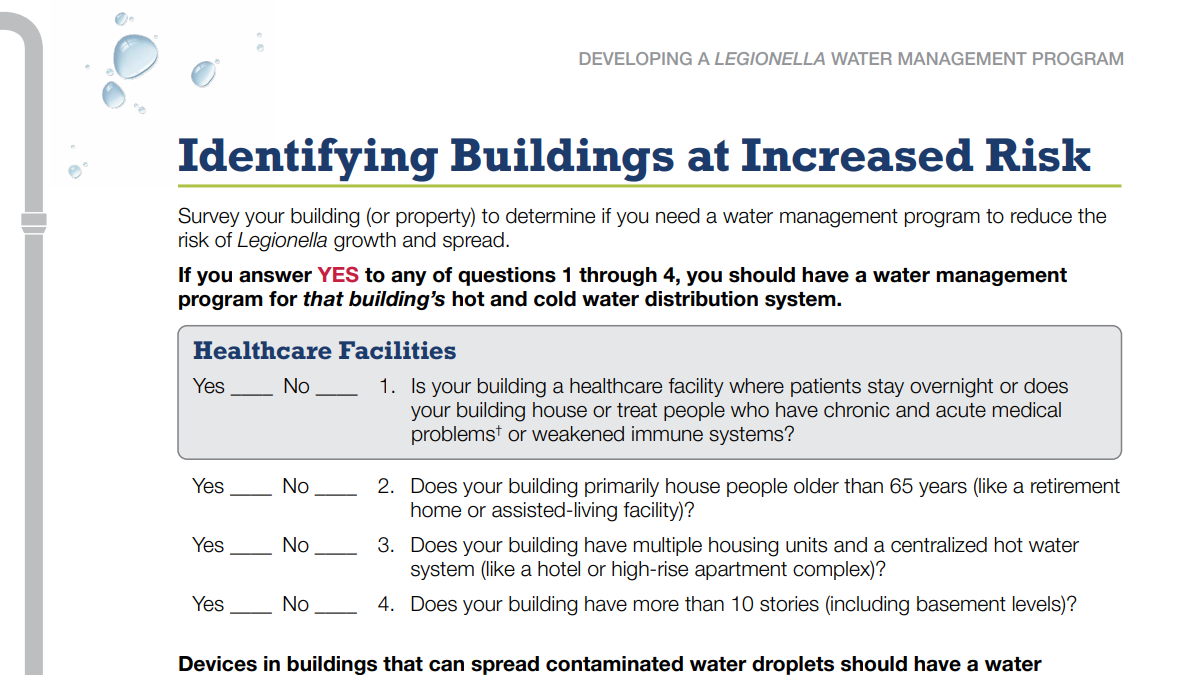Key points
- Quickly assess the need for a water management program (WMP).
- Answer the first 4 questions for buildings and the last 4 questions for devices.
- Effective WMPs can reduce the risk of Legionella growing and spreading.
- This worksheet supplements CDC's Legionella WMP toolkit.

Additional information
The building standards discussed in CDC's Legionella WMP toolkit don't apply to
- Single-family residences
- Small multiple-family residences (e.g., duplexes)
It doesn't apply to those buildings even if they include the devices in questions 6 through 8.
Take steps to prevent waterborne diseases
Residents need to take steps to protect themselves from waterborne diseases even if they live in single-family or small multiple-family residences. Homeowners should follow local and state guidelines for household water use. Owners of the devices in questions 6 through 8 should follow the manufacturer's instructions regarding cleaning, disinfecting, and maintenance.
Resources
Infographic: How Legionella affects building water systems and people
Toolkit: Developing a water management program to reduce Legionella growth and spread in buildings
Toolkit: Controlling Legionella in common sources of exposure
Training: Preventing Legionnaires' disease: A training on Legionella water management programs
- Burns, cancer, solid organ or bone marrow transplant, kidney disease, diabetes, or chronic lung disease
- ASHRAE Standard 188: Legionellosis: Risk management for building water systems. January 2018. ASHRAE: Atlanta.
- ASHRAE Guideline 12: Managing the risk of legionellosis associated with building water systems. January 2020. ASHRAE: Atlanta.
